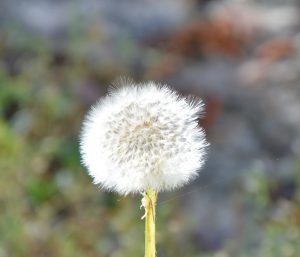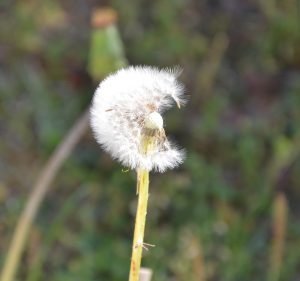
By Les Harrison
Wakulla County Extension Director
There was a time before the age of electronic gizmos when children universally awaited the return of warm weather in April. The balmy temperatures lured most youth into the out-of-doors, each anticipating new adventures and discoveries in the woods and waters of Wakulla County.
Bare feet and gentle spring breezes combined with idle hours to give the carefree youngsters the opportunity to explore the wonders of nature in north Florida. Imaginations blossomed under the oaks and pines as pent up energy was expended and the expectation of summer’s endless days of the leisure soon to come made schoolwork all the more tedious.
With little need for expensive gadgets, the priceless experiences of inventing one’s own entertainment and creating toys from anything on hand still stirs in the memory of many adults. Many of the amusements available were as fleeting as this all too limited time of life.
One of those momentary curiosities are dandelion seed heads. The delicate spherical structures hover slightly above the ground on a fragile stem awaiting a breeze or breath to send seed floating away under a downy canopy.
While there are native dandelion species, the two most commonly encountered are non-native plants of European origin. There are no records of the non-native species’ arrival in the new world, but it is commonly believed they were deliberately brought for cultivation as a medicinal herb during the colonial period.
Dandelion is a cool season, hardy vegetable capable of handling north Florida’s winters with little negative effect. Both of these species are still cultivated today for a variety of uses including salad greens
The hollow flower stalks form a single compound flower of many bright golden colored florets. Like chicory, varieties differ in leaf shape, ranging from very curly leaved to broad leaved.
It has low spreading deeply notched leaves which form a rosette pattern as they emerge from a weak central tap root. It closely resembles endive in form and in cultural requirements.
The big negative is the dandelion’s ability to turn up in lawns and landscapes uninvited. Many local lawns have had the uniform turf “marred’, at least in the eyes of some owners, by the invasion of dandelions.
Keep in mind that European Honeybees and many native pollinators use this species as a source of pollen and nectar. Other wildlife also use these diminutive, but obvious landscape blemishes for food.
The ability to distribute viable seed on the wind to destinations unknown makes this plant a problem in some situations. Seed commonly lay unnoticed until the growing conditions are ideal, and then they germinate and grow aggressively.
This time of year after its flowering is finished, the dandelion’s flower head dries out for a few days. The bloom petals and stamens sluff off and the parachute ball opens into a full sphere.
The seed are scattered on the slightest breeze, or when a child plays with this cotton boll sized collection of seed. The tiny seed lazily float away suspended under the intricate silky fluff.
So when these springtime artifacts are encountered, remember they do not need batteries or the internet to fascinate and amaze.
To learn more about dandelions in Wakulla County, contact your UF/IFAS Wakulla Extension Office at 850-926-3931 or https://blogs.ifas.ufl.edu/wakullaco/
 1
1

